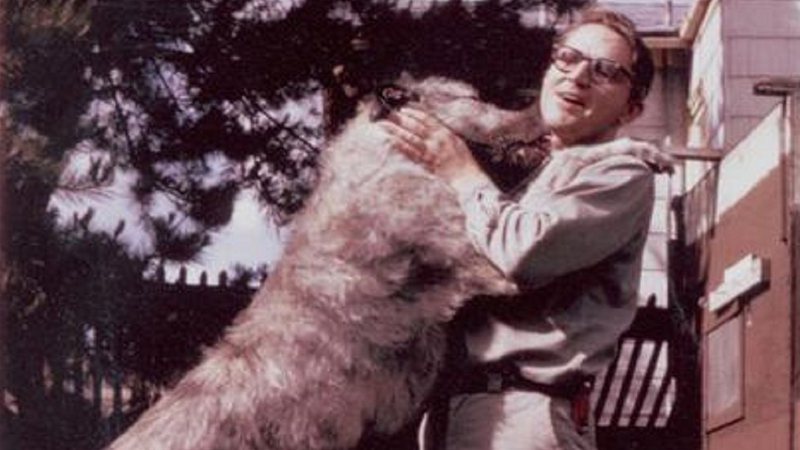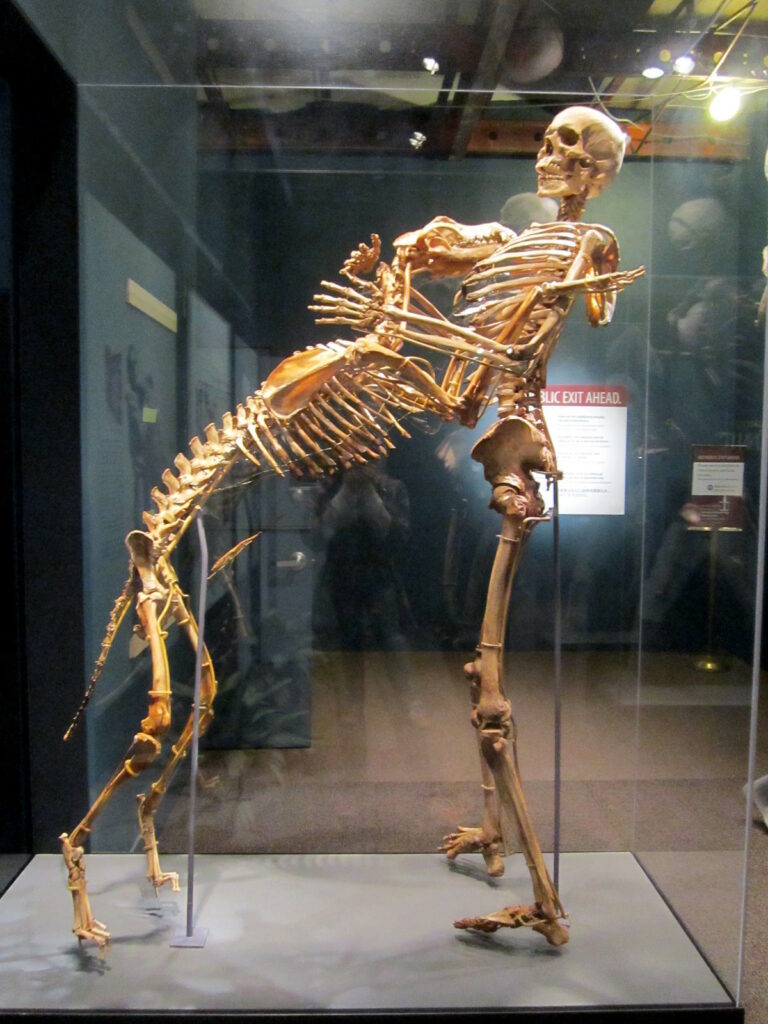Grover Krantz was an anthropologist best known for his research on Bigfoot, also known as the Sasquatch.
Krantz’s journey into Bigfoot research was a strange and controversial one that has left a lasting impact on Bigfoot studies and beyond. This article explores the peculiar legacy of the Bigfoot hunter, Grover Krantz.
Interest in Bigfoot
Born in 1931, Grover Krantz was a well-known physical anthropologist and Bigfoot hunter renowned for his enthusiasm for locating the creature’s clues.
He spent a significant amount of his life searching for evidence of Bigfoot’s existence and was regarded as one of the top authorities on the topic. But his choice to donate his body to science was one of his most extraordinary and unselfish deeds.
Even though he was a well-liked professor at Washington State University, his belief in Bigfoot brought him scorn and ridicule from the scientific community.
However, he has become one of the most well-known personalities in Bigfoot legend, thanks to his unwavering dedication to the subject and his contributions to the field.

Brief background of Grover Krantz
Krantz was captivated by the natural world from a young age because he was raised in a naturalist family.
A significant authority in physical anthropology, he earned his Ph.D. in anthropology from the University of California, Berkeley, and then began teaching at Washington State University.
Despite being a successful student, Krantz was always intrigued by the Bigfoot mystery. As a result, he was one of the first researchers to take Bigfoot seriously and spend time and money investigating the creature in the 1960s.
Many experts were suspicious about the testimonies of Bigfoot witnesses at the time since the Bigfoot phenomenon was usually dismissed as a hoax. Krantz, though, was sure that there was some truth to the legends and that Bigfoot was a real creature deserving of scientific study.
So he gathered evidence for years, including casts of Bigfoot tracks, hair samples, and photographs, and used his knowledge of physical anthropology to examine the data.
Skepticism about Krantz’s discoveries was common, but he never let it deter him. Instead, he proceeded to write about Bigfoot and present lectures, making him one of the creature’s most well-known and outspoken supporters.
Despite the opposition, Krantz’s continuous dedication to the Bigfoot study helped him establish himself as one of the foremost authorities on the topic and gain the admiration of Bigfoot aficionados.
The impact of Krantz’s research on Bigfoot studies
Creating a morphological examination of Bigfoot tracks was one of Krantz’s most important contributions to the field of Bigfoot research. He was the first to adopt a systematic approach to examining the ways because he thought they would provide essential details about the creature’s anatomy and behavior.
This technique entailed comparing Bigfoot footprints to those of other species, looking at the morphology of the footprints, and figuring out where the footprints were located.
Some of the earliest conclusive proof of the existence of Bigfoot came from Krantz’s examination of Bigfoot tracks, which has since become a standard technique in the field.
Another contribution Krantz made to the study of Bigfoot was the creation of a theory regarding the biology and ecology of the creature. He thought Bigfoot was an extinct species of the enormous, massive monkey known as Gigantopithecus, which formerly roamed Asia millions of years ago.
The Bigfoot we know today, he claimed, originated from a small population of Gigantopithecus that crossed the Bering land bridge and persisted in North America.
Although this notion is still debatable, it served as the foundation for future investigations into the biology and ecology of Bigfoot.
The Controversy Surrounding Krantz’s Work
The drawbacks of Krantz’s dedication to the Bigfoot study outweighed his contributions to the discipline.
Many of his Washington State University colleagues perceived his fascination with Bigfoot as a diversion from his academic work and a sign of his quirky personality.
In addition, his reputation fell due to the scientific community’s repeated criticism and mockery of him. Despite this, Krantz never lost his enthusiasm for the subject and stayed committed to it until his passing in 2002.
Grover Krantz leaves behind a strange legacy. On the one hand, he was a well-known lecturer and a recognized authority in physical anthropology. Yet, on the other hand, the scientific community criticized and mocked him for his Bigfoot belief.
However, Krantz’s unwavering dedication to Bigfoot research and contributions have had a lasting impact despite the criticism.
Donating his body to science
Finding evidence of Bigfoot’s existence was only one aspect of Krantz’s interest in the creature. He was also curious about the creature’s structure and physiology and how it might differ from humans.
As a result, he decided to offer his remains to science after he passed away to aid in the advancement of medical study and perhaps shed some insight into the anatomy of Bigfoot.
His body was crucial in the creation of cutting-edge medical procedures and technologies. For instance, his corpse allowed researchers to analyze the anatomy of Bigfoot hunters, which could help them comprehend the physiological and physical demands of hunting the creature.

Strict ethical rules that control and oversee body donation programs ensure that the procedure is respectable, safe, and dignified. In addition, Krantz’s decision had the full backing of his family because they understood that it was in line with his morals and views.
They also took solace in that even after his passing, his body could still impact the advancement of science.
The Bigfoot community embraced and widely recognized Krantz’s decision to donate his body, and his legacy encourages others to think about doing the same.
Since then, numerous people have followed in his footstep, giving their bodies to science in ways that would not have been possible without them. As a result, medical knowledge has advanced significantly.
Krantz’s Legacy in Bigfoot Research and Beyond
Grover Krantz was an extraordinary person who lived a life driven by purpose. Despite receiving much ridicule from his professional peers for having an interest in Bigfoot, Krantz persisted and managed to hold on until the end.
Although he didn’t quite win the “war,” he did leave a legacy that other Bigfoot seekers fervently uphold today.
Additionally, Grover Krantz’s choice to offer his body to science was a kind deed that significantly positively influenced people’s health and well-being.
His legacy will continue to encourage people to consider organ donation, and future generations will remember his impact on medical research.
An inspiring example of one individual’s significant influence on the world is Krantz’s unwavering dedication to assisting others.
Where you can Grover Krantz today
The bones of archaeologist Grover Krantz and his dog, Clyde, are on display at the Smithsonian’s Museum of Natural History in Washington as a touching memorial to a man and his closest friend.
Krantz’s skeleton embraces the articulated bones of his dog Clyde within a glass display case at the museum’s interactive educational area for teens.
The bones remind a man’s love for his pet and of Krantz’s unwavering dedication to his career as an anthropologist.

